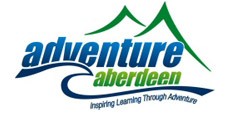With our learning from life placement coming round quickly – I thought I would reflect on my experiences I have so far that will help with my time at Adventure Aberdeen.
The main categories of experience I feel that will be of use in this placement are: my first year placement, my work, my experiences from secondary school and university lectures on outdoor education.
My main reason for choosing Adventure Aberdeen was based on my own keen interesting in sports from my upbringing and my work life. I have worked as casual staff for Aberdeenshire Council for over 3 years now as a Leisure Attendant (lifeguard), an Aquatics Instructor and a Coaching Assistance. I had a variety of sporting qualifications and experience teaching sports in different environments outside of a school. This has mainly become apart of my adult life due to my keen interest in sports as a child. I feel that this background of experiences in sports will help me when out on placement with Adventure Aberdeen.
I also have a job as a Sessional Playworker at The Yard Scotland: an indoor and outdoor adventure centre for children with additional support needs (ASN). This job gives me great experience working hands on with children who have ASN in a playful setting and gives me the opportunity to learn about different ASN that I may meet in a classroom. As well as this I feel that this will be useful experience when I go on placement at Adventure Aberdeen as when I visited Adventure Aberdeen before securing my placement I was told of the work they do with children with ASN which means thanks to my part time job at The Yard I will already have experiences of working with children with ASN outside of a classroom.
In my first year placement at university, there were so many things I gained from this placement it would be impossible to go through it all. However, the main things I felt I learnt from this placement was planning and delivery of lessons, organisation, keeping my folio of evidence and about different ASN needs in the classroom. These are all things that I feel will impact on placement at Adventure Aberdeen in different ways.
Throughout secondary school, I feel I gained multiple different experiences that will continue to assist my journey through placement at Adventure Aberdeen. I gained my Community Sports Leaders Award (CSLA) in my sixth year of academy which meant I was also selected for the Aberdeenshire Leaders programme in 2014. This means that I knowledge on a range of different sports, qualification and voluntary experiences through gaining my CSLA qualification and my place on the Aberdeenshire Leaders programme.
The last area of experiences I feel that will assist me through my placement is my lectures in Outdoor Education. Although one of the reasons I chose this placement was also down to the fact we do not have enough time at university to be lucky enough to have many lectures on Outdoor Education. On the other hand, I knew this was something I wanted to be able to include in my practice when I am a qualified teachers and knew this was the time I could use to gain some experience in this area. However, we do have some inputs on Outdoor Education such as the one I blogged about before on Literacy and History, which you can read here, which I will be able to use the information we have been given in these lectures and workshops for my placement. I know this is an area I will look to develop through this placement through the hands on experience Adventure Aberdeen can provide me with as well as through reading up on different ideas I can use.
So far, I feel I have many skills and an array of knowledge that I can use for my placement this year and there are areas that I am looking forward to developing through the experience at Adventure Aberdeen.




 ldn’t go particularly far or find particularly much. However, what I did find that we could discuss was road safety, road signs and markings such as yellow lines – discussing with the children what they thought they meant. I also thought of reading things like bus time tables as this is a skill that is probably going to be relevant to their lives and is also something no one ever taught me to do.
ldn’t go particularly far or find particularly much. However, what I did find that we could discuss was road safety, road signs and markings such as yellow lines – discussing with the children what they thought they meant. I also thought of reading things like bus time tables as this is a skill that is probably going to be relevant to their lives and is also something no one ever taught me to do. ciety. SOC 2-03a (p.283)
ciety. SOC 2-03a (p.283)
















